Disaster Pending
Meet some of the Maryland engineers at the forefront of disaster resilience and reduction.
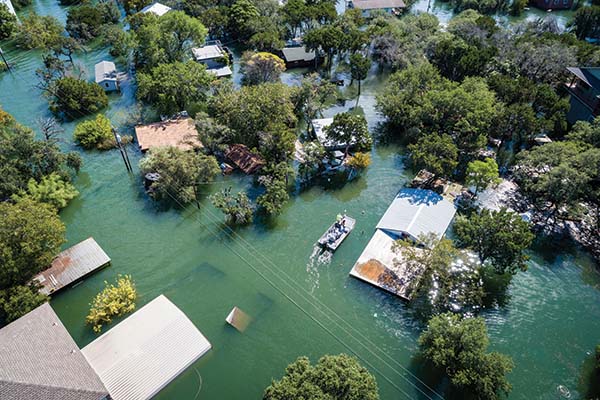
Story by Maggie Haslam.
Meet some of the Maryland engineers at the forefront of disaster resilience and reduction.

Story by Maggie Haslam.
For the scientific community and other experts trying to make sense of a rapidly warming world, climate change is the stuff of nightmares: floods, heat waves, hurricanes, wildfires, and other natural disasters—all occurring with more intensity, frequency, and cost.
According to NOAA’s 2020 Billion-Dollar Disaster report, 2020 was a record-breaking year for weather and climate disasters, with 22 separate billion-dollar disasters across the United States. For only the second time in history, the U.S. ran out of names for its parade of tropical cyclones. Wildfires burned more than 10.2 million acres in the West. Cumulatively, the 22 disasters alone cost the country $95 billion in damage. Disaster effects stretch beyond economics, says Sandra Knight, a senior research engineer at Maryland and career civil servant who has held positions with NOAA, FEMA, and the Army Corps of Engineers. These effects can roost in some very insidious places, like a person’s mental and physical health; they can also compound already existing challenges, like food insecurity, housing, or unemployment.
Engineering humanity away from the challenges of climate change might require a reset in how engineers think by becoming well-versed in the social issues and policies that drive decisions.
“I think engineers have a lot to contribute,” Knight says, “because we turn science into practical solutions. We must consider not just the specifications for a dam or a levee; we have to think about societies, and that can be a hard thing to build into our culture as engineers.”
Knight sees a glimmer of hope on the horizon: the work, ingenuity, and persistence of engineers, like those she works with at Maryland. Researchers, faculty, and students at the Clark School are quantifying the problems stemming from climate change and natural disasters, through the lens of their expertise, with revolutionary results. It’s a calling she considers an ethical requirement.
“It’s not one tool, it’s not one study; it’s a lot of bright engineers and scientists,” says Knight. “There’s good work going on; I’m very hopeful about that. That’s how engineers are trained: We don’t think there’s anything you can’t fix.”
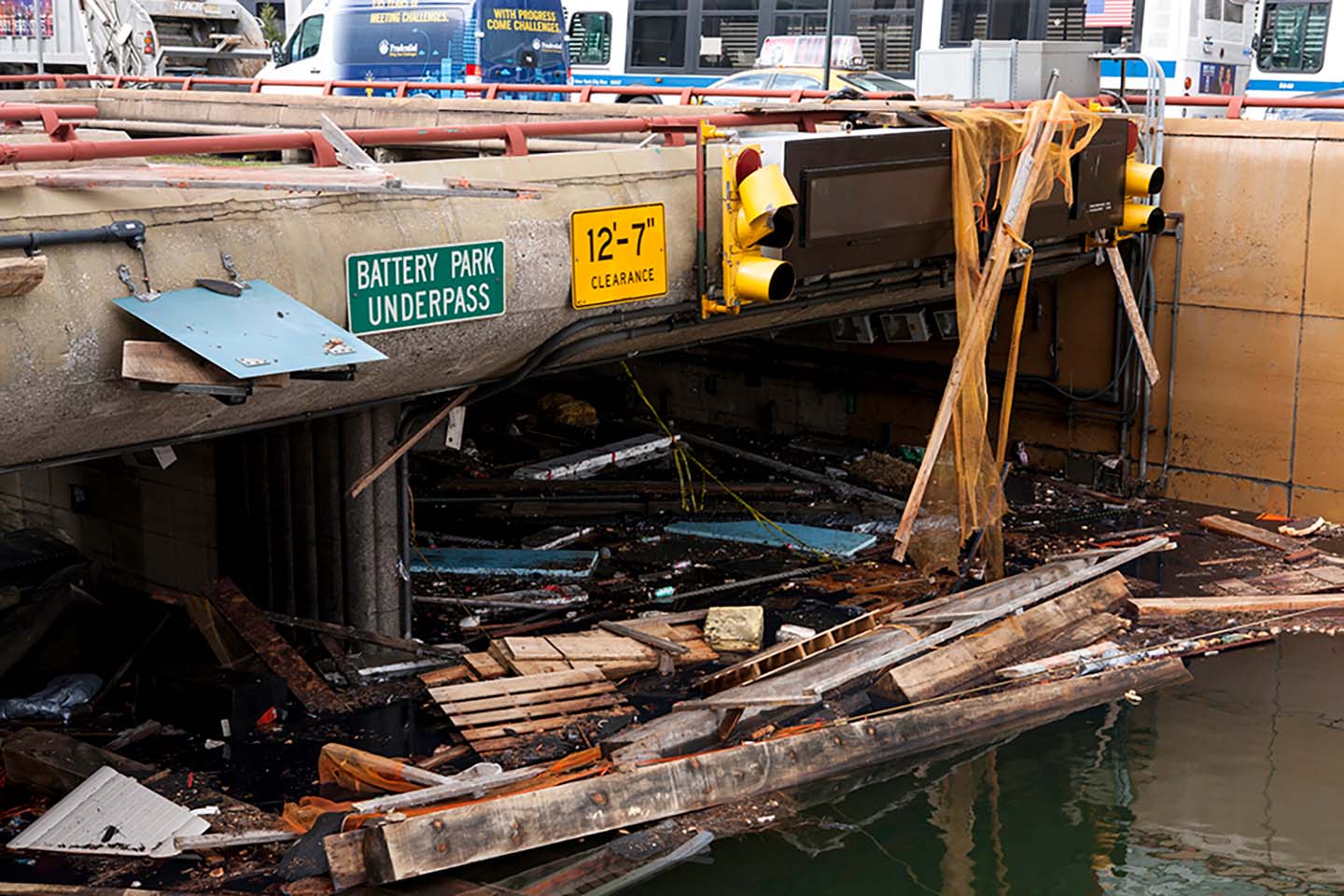
BILLION-DOLLAR DISASTERS Every state in the U.S. has been impacted by at least one billion-dollar disaster since 1980. The cost of these disaster events are increasing over time (Source: NOAA). Photo courtesy of the NYC Department of Transportation.
Under the current emergency funding system in the U.S., when it comes to disasters: the bigger, the better.
That’s because jurisdictions are reimbursed for damage sustained by disasters (such as a flooded downtown) when the damage is over a certain threshold amount, rather than receiving funds to mitigate the flood in the first place. “This encourages jurisdictions to invest their money not in infrastructure but in other places, because if they defer maintenance, they are more likely to get these reimbursements later on,” explains Assistant Professor Allison Reilly.
This past year, a new report by Reilly, Clark Distinguished Chair Deb Niemeier, and University of Delaware Professor A.R. Siders illuminated the U.S.’s broken approach to infrastructure protection and policy and the outcomes that occur as a result—and more importantly, what might be a better way forward. Released through the Day One program, the report lays out a roadmap for more effective, smarter, and equitable disaster policy. The authors argue there is “low-hanging fruit,” such as creating an interagency taskforce or publicly tracking how disaster money is spent and allocated, that would encourage agency coordination and cooperation.
For people who live along the country’s coastlines, perhaps the hardest reality of climate change is the knowledge that their time is running out.
Much of the research on sea level adaptation predicts when coastline houses will be inundated; what these studies don’t consider, says Reilly, is when coastal communities will lose access to critical infrastructure, like hospitals, functional electricity, or grocery stores. “Our current predictions probably overestimate the amount of time that a resident has to reside there,” she says. “In a lot of cases, 10 or 15 years before a parcel is inundated, they won’t be able to get to a fire station.”
Reilly and her students are modeling when loss of mobility and access will occur and comparing those findings to when parcels are projected to flood for Maryland’s Eastern Shore along the Chesapeake Bay. Reilly, who has advised new guidance for sea level infrastructure planning for the state of Maryland, argues that similar timelines should be projected for the whole of U.S. coastlines. As important as where these effects will take place is who will be affected; for poorer coastal residents, the impacts of sea level rise and threat of retreat might exacerbate exist- ing inequities like employment, food insecurity, and economic wealth. Reilly hopes this research can be leveraged by social scientists to explore what it might mean along social strata.
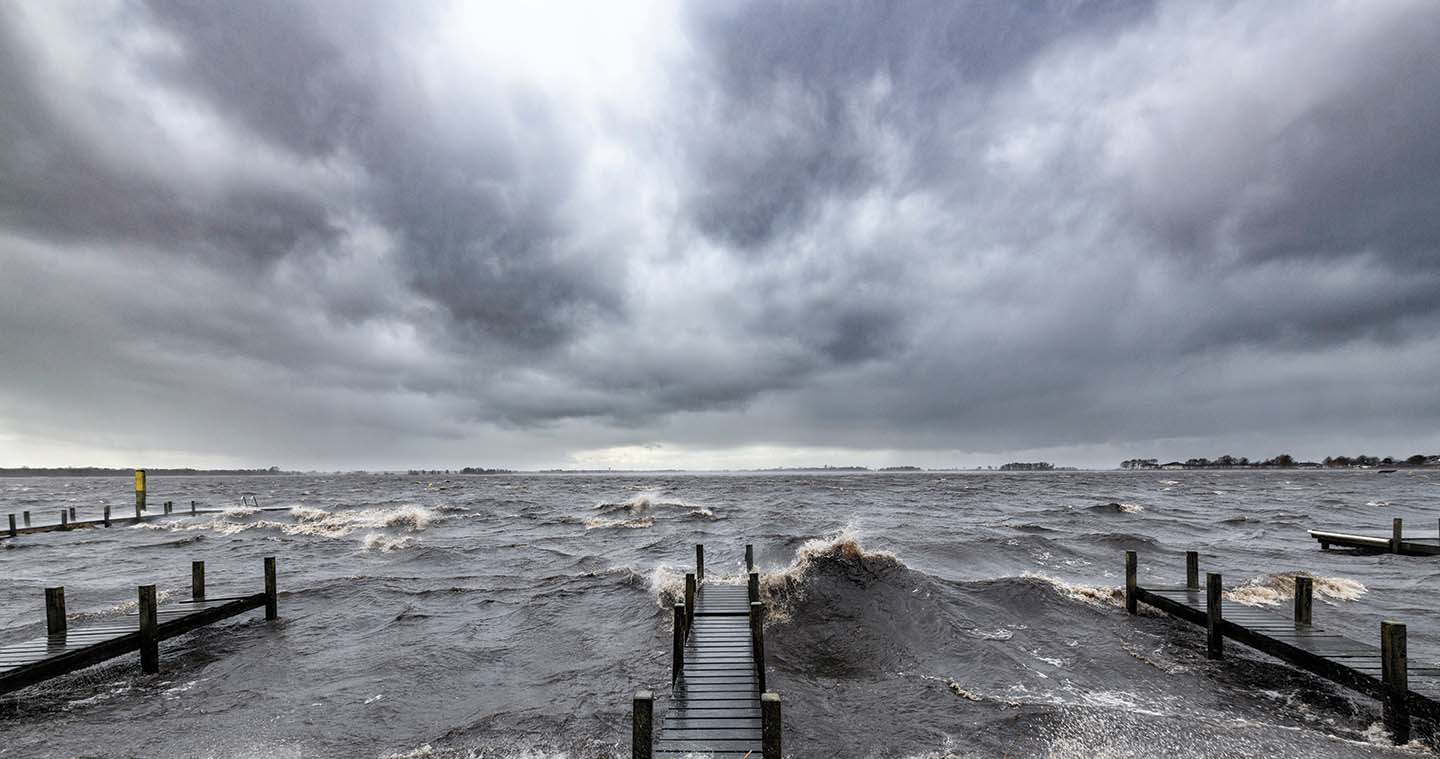
AN EXPENSIVE HABIT Disaster costs for the first nine months of 2021 were $104.8 billion, already surpassing disaster costs for all of 2020 ($100.2 billion, inflation-adjusted to 2021 dollars) (Source: NOAA).
Compound hazards—for example, a tsunami triggered by an earthquake—can be particularly devastating for communities.
A key barrier to planning for and mitigating multi-hazard events: Natural hazard education and research are often compartmentalized, using different quantitative methods and vocabulary. “People working in specific hazard spaces often are speaking different technical languages,” says Assistant Professor Michelle (Shelby) Bensi, who specializes in using probabilistic modeling to understand risk.
A NSF CAREER grant is funding Bensi’s work to create a quantitative framework and common language to address compound hazards, dissolving the niche silos of disaster research and allowing for more impactful work across different fields of expertise. Additional work for the Army Corps of Engineers and Nuclear Regulatory Commission is looking at how to assess the frequency and severity of compound hazards. A project supported by the Department of Energy focuses on nuclear power plants, shedding light on the comprehensive characteristics of hazard events.
“We need to have a lexicon and the mathematical tools that enable us to talk to each other, and we need to train students to work together to bridge conventional disciplinary divides,” Bensi says.
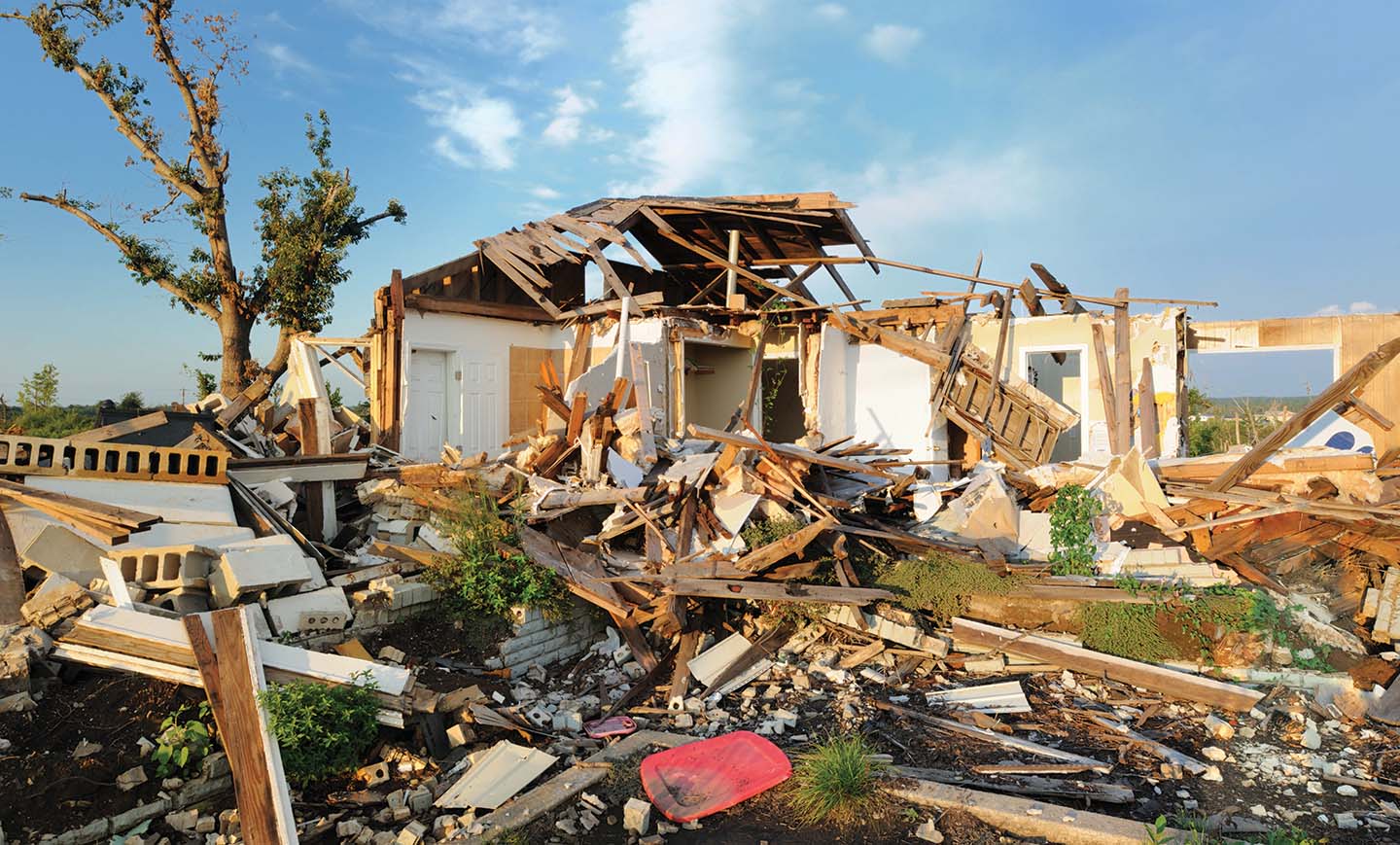
IN PROGRESS In 2021 alone, (as of October 8), the U.S. has been impacted by 18 weather/climate disaster events with losses exceeding $1 billion each. These events resulted in the deaths of 538 people (Source: NOAA).
In the aftermath of a natural disaster, first responders and government agencies must quickly assess damage, ongoing hazards, and greatest need. Someday, emergency management teams may have social media in their toolbox.
Using natural language classifiers, modeling, and machine learning, Ph.D. students Lingyao Li and Zihui (Helen) Ma are scraping information from Twitter and other social media platforms to assess emergency situations, public attitudes, and more. In one study, Li extracted Twitter data during and directly after the 2019 California Ridgecrest earthquake to understand the potential of social media data to rapidly assess its aftereffects—pinpointing damage and injuries within 12–14 hours. A second study by Li and Ma assessed COVID-19 vaccine acceptance in the U.S. from August 2020 to April 2021.
“The COVID-19 vaccine is very important for combatting the ongoing pandemic, but there are still a lot of people who are unsure about it,” says Ma. “We wanted to check vaccine confidence through a social media method to see how people’s attitudes towards the vaccine are changing over time.”
Ma and Li explain that social media is a viable alternative or complement to traditional surveys, satellite imagery, or other current tools; with social media, researchers can see changes in near-real-time, down to the county level, and with high correlation to other data like vaccine rates or intensity scales. “Crowdsourcing social media can generate critical information for interventions by government agencies and emergency management,” says Li, “and could be a powerful tool for disaster response.”
The effects of climate-related disasters are perhaps most obvious in the concrete and steel of our built environment, and how the buildings and bridges of 50 years ago are withstanding the radically different climate of today.
Before 2017, the American Society of Civil Engineers (ASCE) didn’t have a blueprint to guide engineers in building for the floods, rapid-fire hurricanes, or punishing wildfires induced by global warming. Professor Bilal Ayyub, an expert in risk analysis and former chairman of ASCE’s Committee on Adaptation to a Changing Climate, spearheaded a collaborative effort to translate the ramifications of climate change into standards and guidelines for the engineering community. “Climate-Resilient Infrastructure: Adaptive Design and Risk Management” offers methods for risk analysis, resilient design strategies, and case studies to help engineers adapt and plan for a changing climate. This past year, Ayyub oversaw the development of a companion ASCE manual, this time with hazards in mind. “Hazard-Resilient Infrastructure: Analysis and Design” aims to establish a consistent framework for infrastructure design across hazards, systems, and sectors.
“Consistency is the major driver,” Ayyub told the ASCE’s Civil Engineering Source in May. “All of the systems that we are dealing with—whether it’s transportation, water, or power— must be maintained at appropriate levels to achieve community resilience ... Consistency and coordination across sectors, but also across hazards, is essential.”
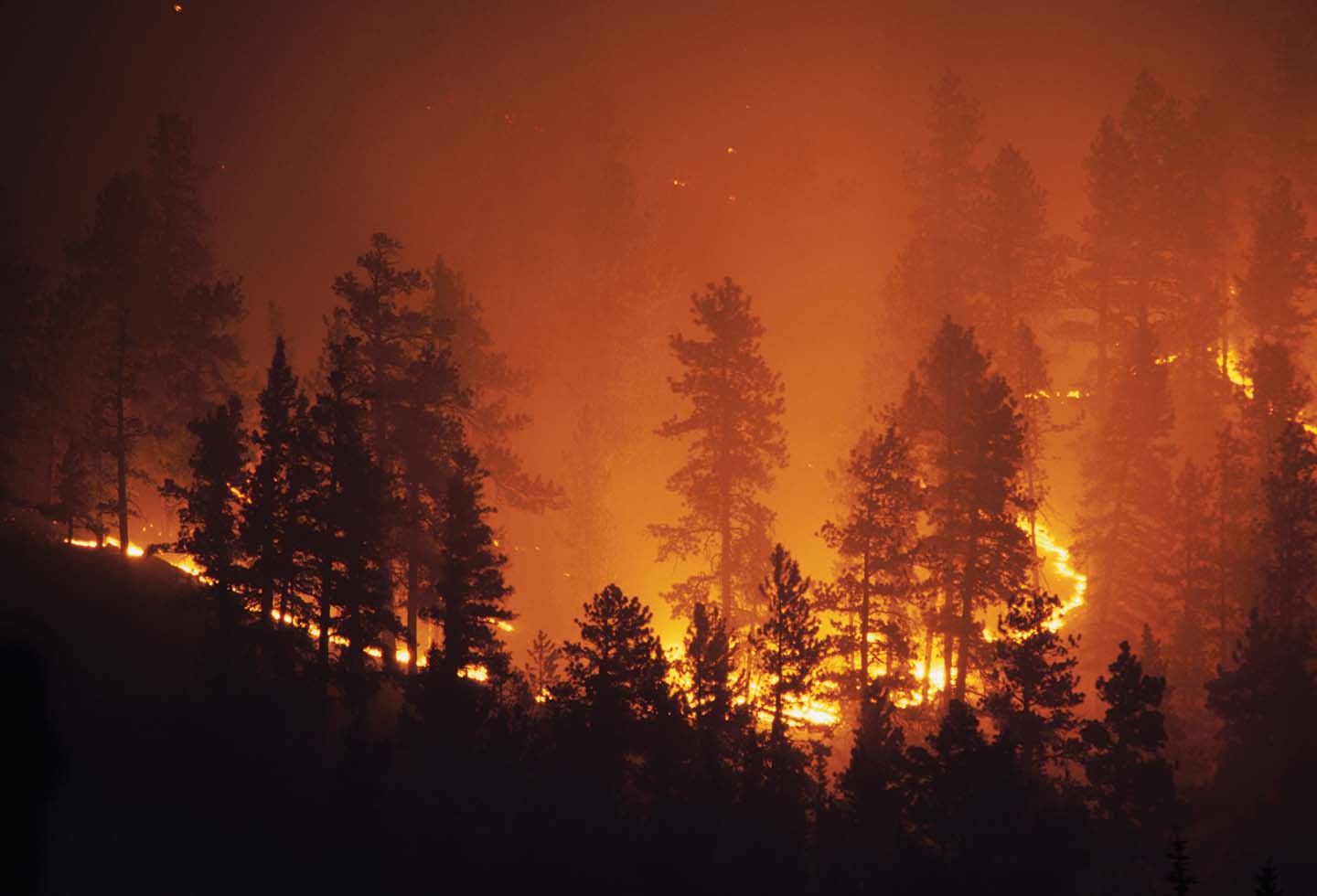
RECORD-BREAKING DISASTERS Extreme events are often seasonal in nature; for example, the peak of the Western U.S. wildfire season occurs during fall. 2020 was another record-breaking U.S. wildfire season that burned more than 10.25 million acres (Source: NOAA).
Sending unmanned autonomous vehicles into search and rescue situations isn’t a new idea. But using the robot’s fate— whether or not it survives the mission—may hold the key to discovering unknown threats, hazards, or things simply out of reach, says Assistant Professor Michael Otte.
“Survivability as a sensor”—a concept initially hatched during Otte’s research with adjunct faculty and roboticist Don Sofge at the U.S. Naval Research Lab—is the basis for ongoing research to develop a functional algorithmic system that would help first responders calculate pathways to pinpoint danger, survivors, or to gather information. With a paper on their findings complete, Otte, Sofge, and Clark School students are starting the next research phase. Otte envisions their work could help first responders navigate unstable conditions and hazardous materials, or whenever there is an unknown. “Most of the time you can say ‘I saw it right here’ rather than ‘I don’t know where it happened,’” he says. “This technology could potentially address that uncertainty.”
The tsunami that hit Japan’s Fukushima Nuclear Plant in 2011 demonstrated how helpless humans can be when disaster events become toxic. But what if robots could be the eyes, or even hands, in emergency situations too dangerous for first responders?
Distinguished University Professor Dinesh Manocha and Assistant Professor Pratap Tokekar are exploring a future where robots could quickly gather intel, communicate, seek out survivors, and even repair the source of a toxic event. With AI, drone technology, sensing, and LIDAR, the researchers see endless possibilities—but an equal number of unknowns. “There’s not a lot of data in these emergency situations. One of the biggest challenges is that emergency and disaster situations are very unpredictable,” says Manocha.
“Robots aren’t going to replace humans, but they can be autonomous and adaptive, gathering and processing information and then sending the findings back to responders so they can formulate next steps,” explains Tokekar.
Forums like the Maryland Robotics Center and a new partnership between UMD, UMBC, and the U.S. Army Research Laboratory, Manocha says, set the stage for researchers from different disciplines to come together. “These problems are hard, but I think the research we’re doing—where you get students, staff, and faculty together under a common goal—is what makes Maryland so special,” says Manocha. “Amazing things can happen.”
This story is featured in the Fall 2021 issue of Engineering at Maryland magazine.
Three senior engineers at Maryland who have had front row seats to the power and devastation of water break down the planet's most costly hazard.
Read More
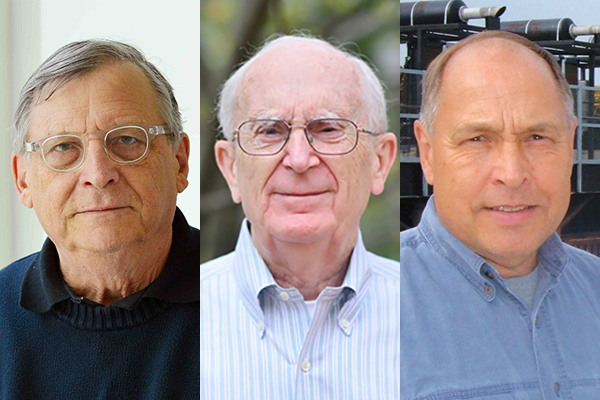
From left to right: Gregory Baecher, Gerald Galloway, and Ed Link